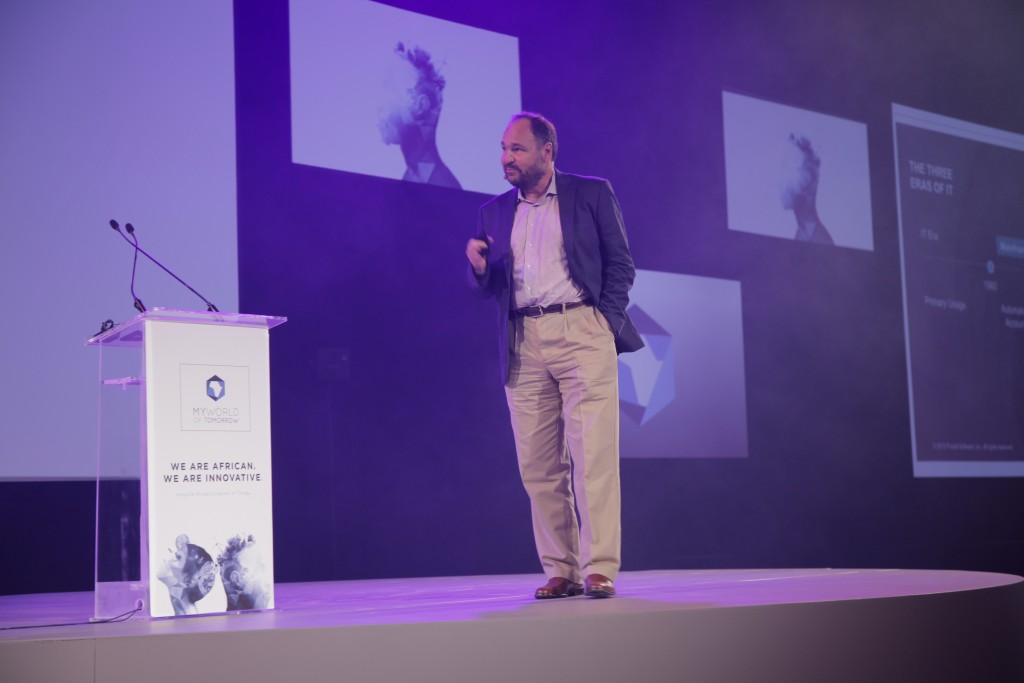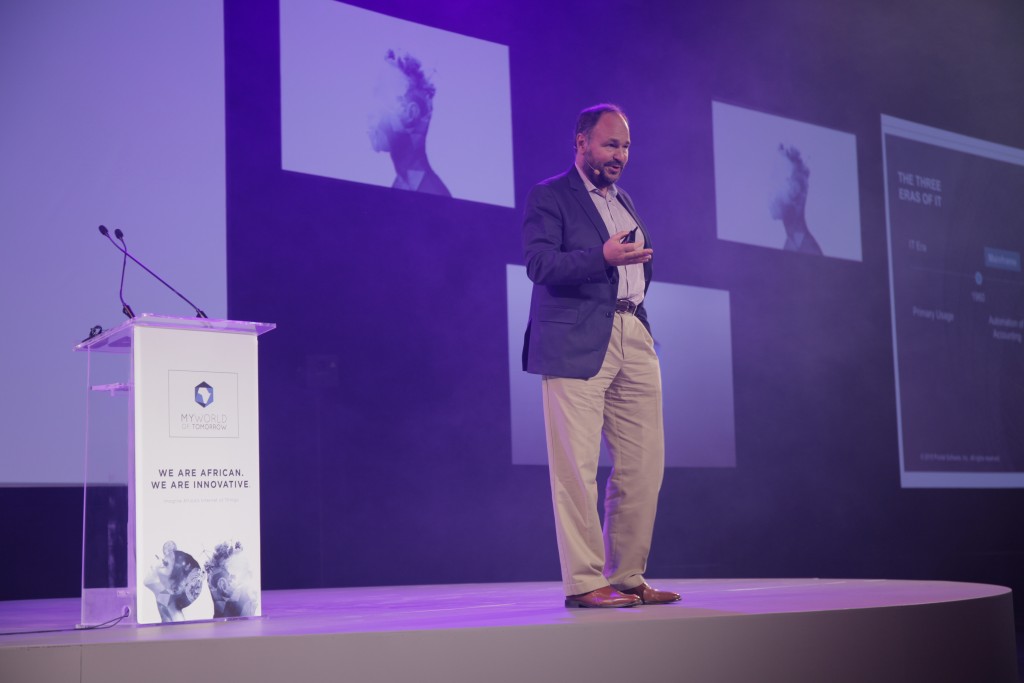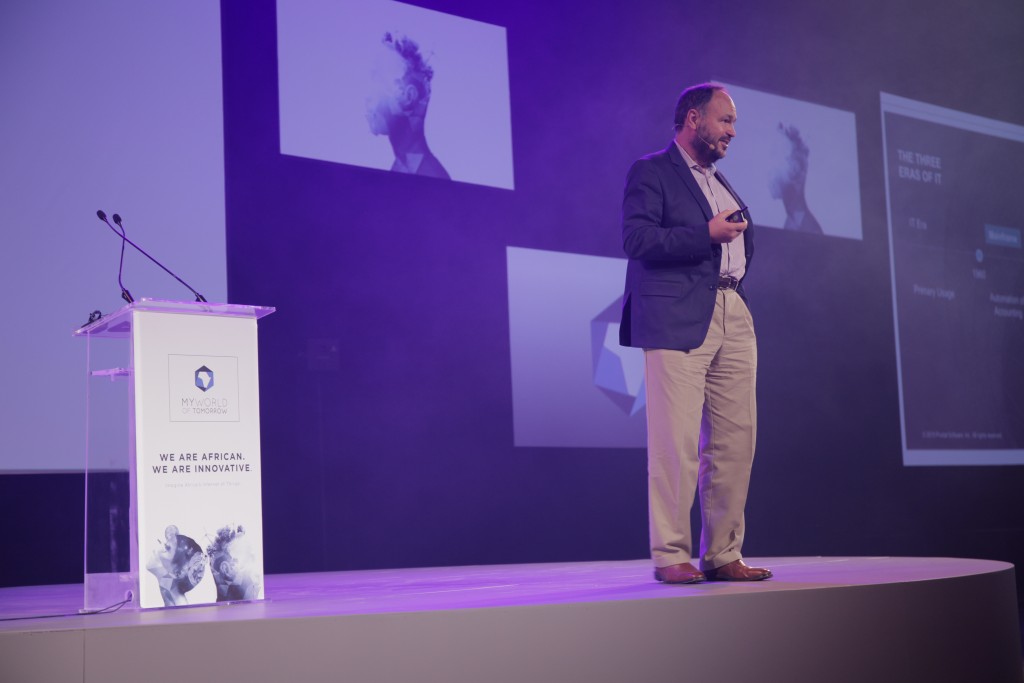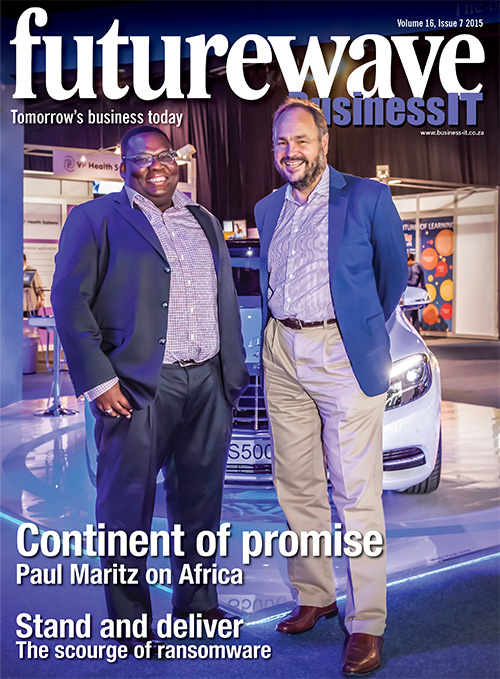Paul Maritz has been one of the prime movers in the modern IT industry. He helped to guide Microsoft in the client/server years and piloted both EMC and VMware through some of their most active periods before forming Pivotal Software.
As an African himself (he went to school and university in KwaZulu-Natal), Maritz feels a special affinity for the continent and believes that there is lots to be positive about in Africa. Kathy Gibson spent some time with him at MyWorld of Tomorrow
The developed world needs to identify the smart and innovative minds in Africa and help them to succeed with the right support.
That’s the word from Paul Maritz, executive chairman and founder of Pivotal Labs, speaking at the recent MyWorld of Tomorrow event in Sandton.
Asked whether he thinks Africa is using technology in the best way to solve its problems, Maritz says the outside world can’t preach or pontificate to the continent.
“At the end of the day, African’s know much better than us what is going on here and what is working for them. We need to find the people and institutions that are thriving and get behind them.”
African talent is not as scarce as one might think, he adds, relating how a friend recently discovered a university in Uganda that is producing world-class PhDs in Computer Science in partnership with a Dutch university.
Ashesi University in Ghana, run by an ex-Microsoft manager, is turning offering a Harvard-quality degree, training graduates to be critical thinkers and ethical leaders, Maritz says.
“These are homegrown skills,” Maritz says. “One of the challenges is to find these people and institutions that are capable of great things, and pushing them forward.”
Although there is a good pool of skills in South Africa, they are still somewhat cut off from the rest of the world as a result of the years of isolation in the 1980s and early 1990s.
Maritz cites the example of a wildlife conservation project that ex-Microsoft executive Paul Allen is involved in. “He put up the money to do an aerial count of elephants in sub-Saharan Africa. There is currently an elephant holocaust going on in Africa, but there has never been a baseline count of the population.”
With such a massive and complex task, Allen and Maritz considered whether it could be aided with software. “We found a team of people in South Africa out of the defence industry who can do this, using image recognition to count elephants.

Yes, Africa has challenges: “I’m not one of those guys who has a simplistic view of things. But there are a lot of good things going on in Africa – and we need to find them and nurture them.”
“This is a great example of how connectivity enables anything. You don’t have to be sitting in Silicon Valley to be bleeding edge anymore.
“These are five smart guys who have access to all the technology they need, and can tap into it as they need.”
During the Ebola epidemic last year, another smart technologist rapidly set up a nationwide network in Liberia.
“I think this is one of the reasons that Liberia came out of the crisis to quickly,” Maritz says. “Because there was connectivity people could report using their cell phones so areas could be quickly isolated.”
Mobile technology has a huge role to play in Africa, he says. A US-developed invention uses a laptop to test blood samples and identify major viruses literally in minutes. The solution will cost less than $5 000, give blood test results in 30 minutes and connect to the Internet.
“It will be a gamechanger,” Maritz says.
Yes, Africa has challenges, Maritz adds. “I’m not one of those guys who has a simplistic view of things. But there are a lot of good things going on in Africa – and we need to find them and nurture them.”
“Don’t forget that a lot of the Amazon data centre code came out of Cape Town.”
Maritz points out that when he graduated from what is now the University of KwaZulu-Natal in 1977, in order to work on operating systems he had to leave South Africa.
“Now that’s not necessarily the case anymore. If you are ambitious and want to learn about things and contribute to development you can do that without leaving home – where it’s South Africa or Tanzania.
“You don’t have to be on the other side of the world to have a seat at the table. Smart young people no longer have to feel that they are trapped in a backwater.”

People forget that a lot of the smart code comes out of the back end. There are very few things that a mobile device in isolation is useful for. It’s really just a smart device in the context of being continuously attached to the data.
While mobile technology has been touted as the solution for many of Africa’s needs, Maritz points out that none of it is possible without powerful data centres on the back-end.
“People forget that a lot of the smart code comes out of the back end,” he says. “There are very few things that a mobile device in isolation is useful for. It’s really just a smart device in the context of being continuously attached to the data.
“But Uber is useless without the back-end. When you type a search into Google, it is being constantly refreshed from the back-end.
“Once you go beyond voice, mobile solutions consist of an app on the phone in conjunction with an app, and data, in the data centre. And people are starting to realise that a lot of the smarts are in the data centre.”
At the same time, the cloud is driving tremendous democratisation of back-end computing. “You don’t have to be a big bank to have access to a data centre. You can rent space in a world-class data centre and tap into thousands of servers without having to worry about their care and feeding.”
However, organisations need to recognise the change that is happening in the IT space, and change with it.
He says Pivotal was founded on the premise that the industry is changing, and we need to find new ways of engaging with people and things in the face of these changes.
Maritz points out that there have been three main eras of IT so far: The mainframe, which saw the automation of accounting; the PC/Web era, where paper-based processes were automated; and the current cloud/mobile/IoT era. In this latest era, paper will almost disappear, driven by consumer use cases into the business world.
In this era, consumer and social apps will drive new systems of engagement, and the IoT will take off.
All use cases are driven by certain technologies, he adds. In the new era, smart devices, connectivity and cloud computing are the technologies that will enable new ways of doing things.
Mobility is driven by the availability of almost unlimited smart devices and connectivity. Cloud computing, in turn, is enabled by an almost unlimited number of servers, in-memory processing and parallelisation.
“As a developer, the cloud lets you have an unlimited number of servers or processors when you need them,” Maritz says. “This is opening up new solutions in big data, machine learning and contextual intelligence. Developers of today will use processors in a prolific way.”

There is almost a rising sense of panic in traditional enterprises as they realise they are going to have to use technology in different ways from what they are used to.
Putting all these elements together makes for some interesting outcomes, Maritz says.
There are new systems of engagement being developed. Instead of spending on broad media advertising, companies can spend their money on building compelling, differentiated, realtime services.
He cites as an example a Tesla car, which engages largely on the Internet and via the on-board app – rather than simply by driving the car. “There is almost a rising sense of panic in traditional enterprises as they realise they are going to have to use technology in different ways from what they are used to,” he warns.
“The idea is to catch someone in the act of doing something and affect the outcome – that is where the money comes in. This is what is driving the disruption – where the relationship resides is what’s driving business.”
Maritz points out that these business models are enabled by storing and analysing information on the back-end. This can only be done with a highly parallelised architecture that can ingest, analyse, learn and react at scale – and cost-effectively.
“The IoT is not just about catching someone in the act of doing something – but catching something in the act of doing something, and affecting the outcome,” he says.
Again, an intelligent and scalable back-end is needed, and this means adopting the cloud as a platform and an architecture.
Maritz concurs with Gartner’s philosophy of bimodal IT, where existing IT systems need to be maintained and developed, while new systems are built at the same time. “These new systems require a different approach to building and managing. And businesses are going to have to learn to live with both of these environments. “Companies are going to have support two tribes within their organisations.”
Mode one systems are about reducing cost and complexity, Maritz points out, and they won’t offer differentiation. “Where you can differentiate is in mode two,” he says. This involves building in a cloud-native approach, in an agile way, that leverages big data and machine learning. “And you are going to be technology-savvy in your company,” he adds.
In fact, all companies are going to have to become modern software companies, which means that the people have to be aligned and skilled to that. Companies have to think about the platform they use, because it must support cloud architecture and allow organisations to perform analytics and learning at speed, scale and lower cost.
“If you can’t do this, you will be at a fundamental competitive disadvantage.”
Software is at the heart of the experience, Maritz points out. But it has to be malleable; while connectivity and smart devices provide a rich, continuous flow of data to learn from.
“Organisations need to realise that this is not an IT problem; it’s a business problem,” Maritz says. This means companies need to have integrated teams of business and technology people. Development requires continuous code reviews, continuous building and testing, and continuous refactoring. “The key word is continuous. You are not building a single big system.”
In terms of the platform, this needs to be optimised for modern development, offering continuous delivery, micro-services and security/manageability – and in a native way. It must also be open, able to address any cloud whether private or public; and operate in a broad ecosystem.
To enable rich, realtime analytics, the system needs to be cloud-native and able to scale out in a cost-effective way. The open, broad ecosystem must support a choice of semantics, from SQL to deep learning.
“So how do you get going?” Maritz asks. Start with right-sized projects, he advises. These should be big enough that if they are successful, they matter and demonstrate business value – quickly. “Use that to start building credibility and momentum. You have to get off on the right footing,” he adds, which means the right development environment and platform.
“And find partners that can do this with you, not for you. This is going to be your differentiator – you can’t outsource that. Partners must help you to build it and transfer it.”

